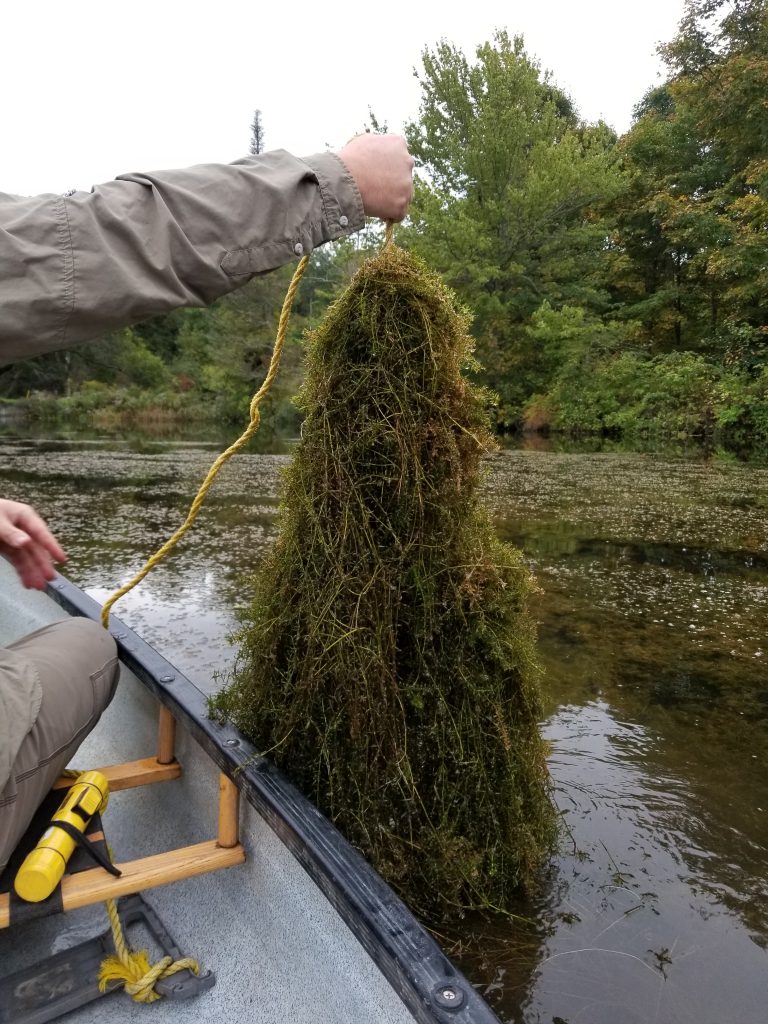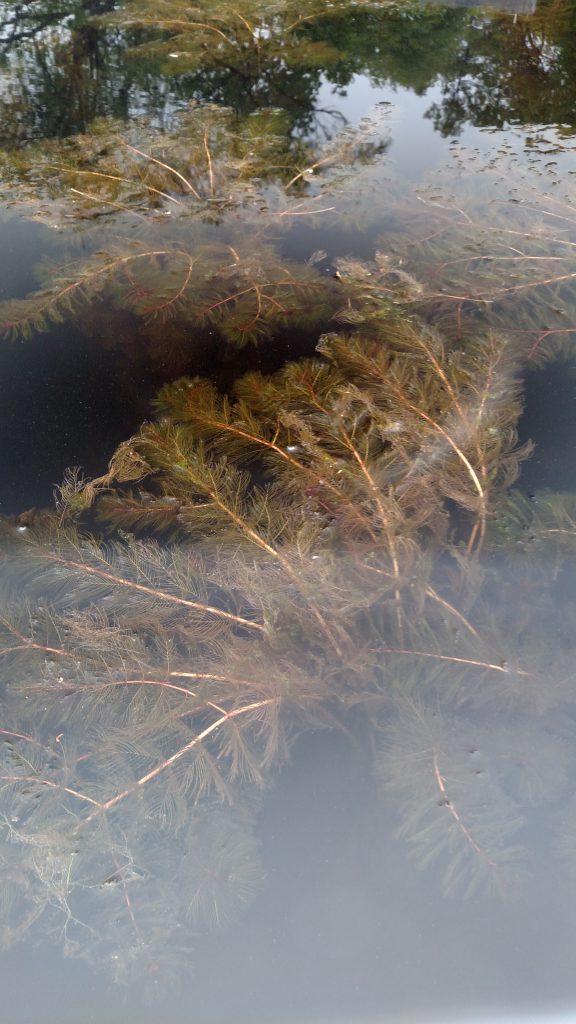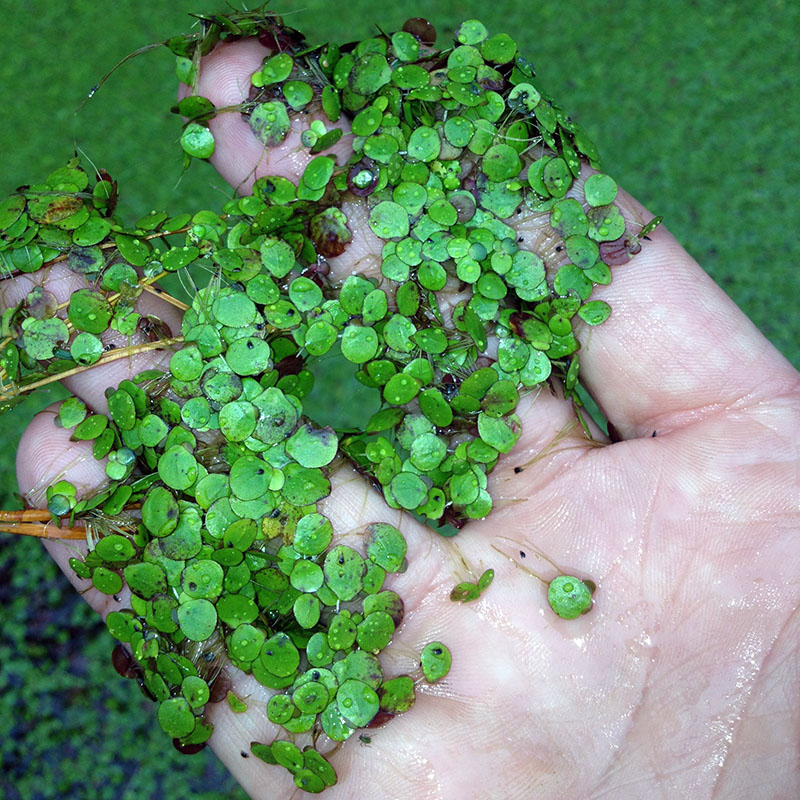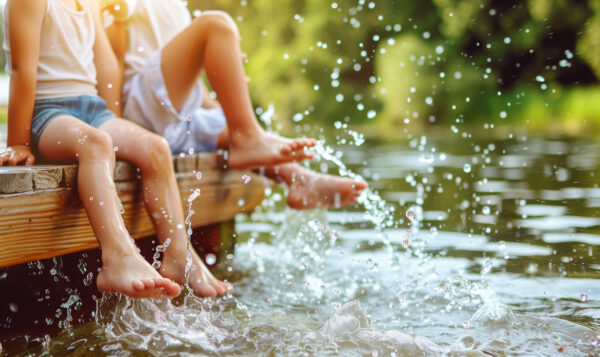
Nuisance Algae Species and Pond Weed Identification
We all benefit greatly from the beauty and value of our natural surroundings, but the rise in human influence has affected the delicate balance of many ecosystems across the country, allowing the introduction of nuisance and invasive pond weeds into aquatic ecosystems that cannot withstand their growth. Many of these non-beneficial pond weeds have choked out native plants in our local communities for more than a century, and continue to reproduce and spread through our nation’s waterways.
To enhance the native vegetation in your area, it’s crucial to conduct pond weed ID in order to identify invasive pond weeds that have taken root, understand the most effective and ecologically responsible treatment and disposal methods and work with a professional to learn how to get rid of invasive pond plants.

Hydrilla (Hydrilla verticillata)
Hydrilla is an invasive pond weed that is native to Asia but has spread to every continent except Antarctica. It was originally found in the US in Florida in 1959 and has continually proliferated northward and westward throughout the country. Once introduced to a pond or lake, hydrilla can rapidly choke out native vegetation and interfere with drainage and irrigation canals, boat docks, and public water supplies. If it gets out of hand, hydrilla can be extremely difficult—and costly—to remove, meaning early detection is imperative for effective treatment results.
How to Get Rid of the Invasive Lake Weed Hydrilla:
Hydrilla management strategies will depend on the goals of each individual waterbody. Mechanical control can reduce vegetated biomass, but will spread the plant through fragmentation. Grass carp and targeted systemic herbicides remain the preferred methods of control for this plant. Once the general growth is under control, spot treatments can be used on occasion.

Fanwort (Cabomba caroliniana)
Fanwort is an extremely dense submerged plant that can negatively affect water quality, disrupt recreational activities, threaten aquatic habitats and jeopardize a diverse assemblage of existing native plant vegetation. The plant is native to the southern region of the United States and is often found in slow-moving water, but is also able to thrive in northern regions. Fanwort’s delicate stems easily fragment and can re-sprout in both high nutrient and low nutrient waterbodies. When left untreated, the plant can deplete oxygen in the water, which may cause fish kills and harm native vegetation, making it an invasive pond weed for many parts of the U.S.
How to Get Rid of the Invasive Pond Weed Fanwort:
Though fanwort is very difficult to fully eradicate from a waterbody, aquatic herbicide treatments over the course of several seasons can help contain the plant without negatively impacting other wildlife and vegetation native to the area. The introduction of grass carp to the waterbody may also be an effective natural solution.

Curly-leaf Pondweed (Potamogeton crispus)
Native to Eurasia, Africa, and Australia, curly-leaf pondweed was first introduced in the Great Lakes region of the United States in the 1800s. Unlike most plants, curly-leaf pondweed thrives in low-lit water and can be seen in late fall and early spring, allowing it to get a head start on most vegetation and create a surface mat that deprives other plants of oxygen. Due to its turions, which are overwintering storage buds that can hitch a ride on boats, fishing gear, and animals, this invasive pond weed has reproduced and spread throughout nutrient-rich waters in most of the northern and southern regions of the country.
How to Get Rid of Curly-leaf Pondweed:
The introduction of grass carp may be an effective natural solution to curly-leaf pondweed overgrowth if it is a legal option in your state. A proactive approach to gain long-term control of the nuisance plant may also be the use of a slow-acting systemic herbicide with a prolonged exposure period. An effective management strategy will provide comprehensive techniques to prevent turions and plant fragments from displacement by recreational crafts and lake visitors.

Eurasian Watermilfoil (Myriophyllum spicatum)
Eurasian Watermilfoil is an invasive pond weed that was accidentally introduced to the United States from Europe in the early 1900s and has since spread, likely on water sports equipment, across the Mid-Western states. Milfoil plants have feather-like leaves and are capable of thriving in wide ranges of aquatic habitats, as long as enough light is available. Eurasian watermilfoil can typically be found in nutrient-rich lakes, often creating vast mats of floating canopy that crowds out native vegetation.
How to Get Rid of the Invasive Pond Weed Eurasian Milfoil:
The plant can rapidly spread due to its ability to reproduce from fragments, which can make mechanical removal an ineffective management solution. Aquatic herbicide treatments, which are performed via boat and subsurface injection to target growth areas, can be effective. In recreational waterbodies, visitors should also clean off aquatic equipment after use to ensure plant fragments are not transported elsewhere.

Toxic Blue-Green Algae (Cyanobacteria)
Commonly referred to as blue-green algae, cyanobacteria produce blooms that have the appearance of spilled paint on the surface of a lake or pond. There are many different species of blue-green algae, but the most commonly detected are Anabaena, Aphanizomenon, Microcystis, and Planktothrix, which can grow quickly when the water is warm and enriched with nutrients. Common concerns associated with blue-green algae are taste and odor compounds and the production of a toxin that can contaminate drinking water and endanger pets, humans, and wildlife.
How to Get Rid of Blue-Green Algae:
In order to restore a pond or lake with a cyanobacteria bloom, aggressive and immediate action needs to take place, followed by water quality manipulation and regular maintenance. Treatments should be conducted with algaecides specifically geared at treating blue-green algae and be followed with continued monitoring. Because most cyanobacteria blooms occur when nutrient loading is very high, lake and pond managers should be diligent in preventing excess nutrients from entering their waterbody.

Duckweed and Watermeal (Lemnoideae/Wolffia spp.)
Duckweed is a floating aquatic plant found in still or slow-moving nutrient-rich waterbodies. When people talk about duckweed, they are commonly referring to one of five species: giant duckweed, common duckweed, landoltia duckweed, mosquito fern/Azolla, or watermeal. When left unmanaged, this invasive pond weed can rapidly reproduce, developing a thick mat on the surface of a lake or pond, which can lead to fish kills and endangerment to other wildlife.
How to Get Rid of Invasive Pond Weeds Duckweed and Watermeal:
Small infestations of duckweed may be suitable for biological treatment methods, including the addition of Triploid Grass Carp to the waterbody. Improving water movement by installing a fountain or submersed aeration system can also help. A comprehensive management plan that decreases the nutrients in a lake or pond may also help reduce the impact of the plant. For more severe infestations, herbicide applications should be considered.

Giant Salvinia (Salvinia molesta)
Native to South America, giant salvinia are free-floating, clustered, invasive pond weeds that damage aquatic ecosystems by overcrowding and replacing native plants with a thick, floating canopy, which blocks out sunlight and depletes a waterbody’s oxygen levels. Giant salvinia contains chain-like oblong leaves with sharp hairs. Due to its ability to reproduce through plant fragmentation, giant salvinia can be unintentionally spread to new waterbodies by animals, boats and other aquatic equipment.
How to Get Rid of the Invasive Pond Weed Giant Salvinia:
While the early growth of giant salvinia can be quite small, with leaves growing under 1cm in length, mature mats are many layers thick and often require several consecutive treatments to be fully controlled. Slow-acting systemic herbicides, which are absorbed by the plant, can be an effective solution for salvinia infestations. Contact herbicides, which act more quickly, may also be considered, depending on the management goals of the waterbody.

Phragmites (Phragmites australis)
Phragmites australis, or common reed, is a tall grass and highly invasive species that can plague lakes, ponds, marshes and wetlands across the country. When left untreated, the perennial grass can grow up to 16 feet tall and form dense impenetrable monocultures. The plant thrives by taking up space, creating a complex root system and secreting an acid in to the soil that helps it outcompete and destroy other plant species. As a result, area wildlife can struggle to find food within the ecosystem.
How to Get Rid of Phragmites:
With a diligent, multifaceted approach successful phragmites management is possible. Traditionally, the main focus of a phragmites management program is herbicide treatment in the fall followed by mechanical removal or burning. During the fall, the plants take up more herbicide than at any other time of the year because of the translocation process, when the plants are sending all their sugars and nutrients to their rhizomes for the winter.

Bushy Pondweed (Najas spp.)
Bushy Pondweed, or southern naiad, is a submersed aquatic plant with dense, abundant branches, deep green or purple leaves and a substantial root system. Bushy pondweed is invasive and can grow up to 12 feet under water, particularly in areas that receive a lot of sunlight. Particularly dense stands can deplete dissolved oxygen and contribute to fish kills. The nuisance plant can spread through fragmentation and seeds, and when left unchecked can hinder beneficial plants from thriving in a lake or pond.
How to Get Rid of Invasive Bushy Pondweed:
Early season treatments are best for controlling bushy pondweed growth. Because bushy pondweed can reproduce from fragments, hydro-raking, pulling or cutting is not typically an effective treatment method. Environmentally friendly pond dyes can help limit sunlight, which can help reduce the growth of the plant. Grass carp can also be an effective solution. If the infestation is more severe, herbicide applications may be considered.
How to Get Rid of Invasive Pond Plants
There are many ways to manage and prevent nuisance and invasive pond weeds, but one of the most crucial elements of an invasive species management program is to limit nutrient influx and prevent the introduction of any invasive species through diligence and careful attention to your lake or pond. It is important to conduct regular inspections, and seek out professionals who understand pond weed identification and the challenges and considerations in managing wetland and upland habitats for invasive plant species.
Once invasive vegetation is discovered, a professional will conduct pond weed ID strategies to accurately identify the plant so that a targeted and sustainable management plan can be put in place. The early detection of problematic plants will allow for more effective management and prevent the irreversible spread of the undesirable vegetation while restoring balance to aquatic ecosystems.
SOLitude Lake Management is a nationwide environmental firm committed to providing sustainable solutions that improve water quality, enhance beauty, preserve natural resources and reduce our environmental footprint. SOLitude’s team of aquatic resource management professionals specializes in the development and execution of customized lake, pond, wetland and fisheries management programs that include water quality testing and restoration, nutrient remediation, algae and aquatic weed control, installation and maintenance of fountains and aeration systems, bathymetry, mechanical harvesting and hydro-raking, lake vegetation studies, biological assessments, habitat evaluations, and invasive species management. Services and educational resources are available to clients nationwide, including homeowners associations, multi-family and apartment communities, golf courses, commercial developments, ranches, private landowners, reservoirs, recreational and public lakes, municipalities, drinking water authorities, parks, and state and federal agencies. SOLitude Lake Management is a proud member of the Rentokil Steritech family of companies in North America.









